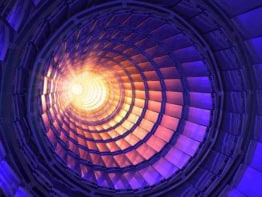The acclaimed theoretical physicist Victor Weisskopf has died aged 93. Weisskopf’s research into quantum mechanics led to his involvement in the Manhattan Project during the Second World War to develop the atomic bomb, a weapon he was later to campaign against. In the course of his career, Weisskopf worked with many famous physicists, including Albert Einstein, Max Born, Niels Bohr, Erwin Schrödinger and Wolfgang Pauli.
Born in 1908 in Vienna, Austria, Weisskopf studied in his home city until 1931, when he took his PhD at the University of Göttingen in Germany. His research then took him to the University of Berlin, where he worked with Schrödinger for the next six years. In 1933, he moved to the University of Copenhagen in Denmark to work with Niels Bohr.
Weisskopf emigrated to the US in 1937 as Nazism emerged in Europe. After working as an assistant professor at the University of Rochester for six years, he became a US citizen in 1943. The following year he joined the Los Alamos National Laboratory, where he became involved in the Manhattan Project. In 1946, a year after witnessing the detonation of the first atomic bomb in New Mexico, Weisskopf joined the Emergency Committee of Atomic Scientists, which was chaired by Einstein. He went on to co-found the Federation of Atomic Scientists, which campaigned for the peaceful use of atomic energy.
Later that year, Weisskopf was appointed professor of physics at the Massachusetts Institute of Technology (MIT), where he worked until 1960. During a leave of absence between 1961 and 1965, he was director general of CERN, the European Laboratory for Particle Physics. He took the decision to build the intersecting storage rings that produced CERN’s first collisions between protons in 1971. Returning to MIT in 1965, Weisskopf continued his research and became head of the department of physics, before retiring in 1973.
Weisskopf’s achievements earned him a host of awards and medals, including the French Légion d’Honneur and the German Pour le Mèrite. He was also an honorary fellow of the Institute of Physics. He died on 21 April.



